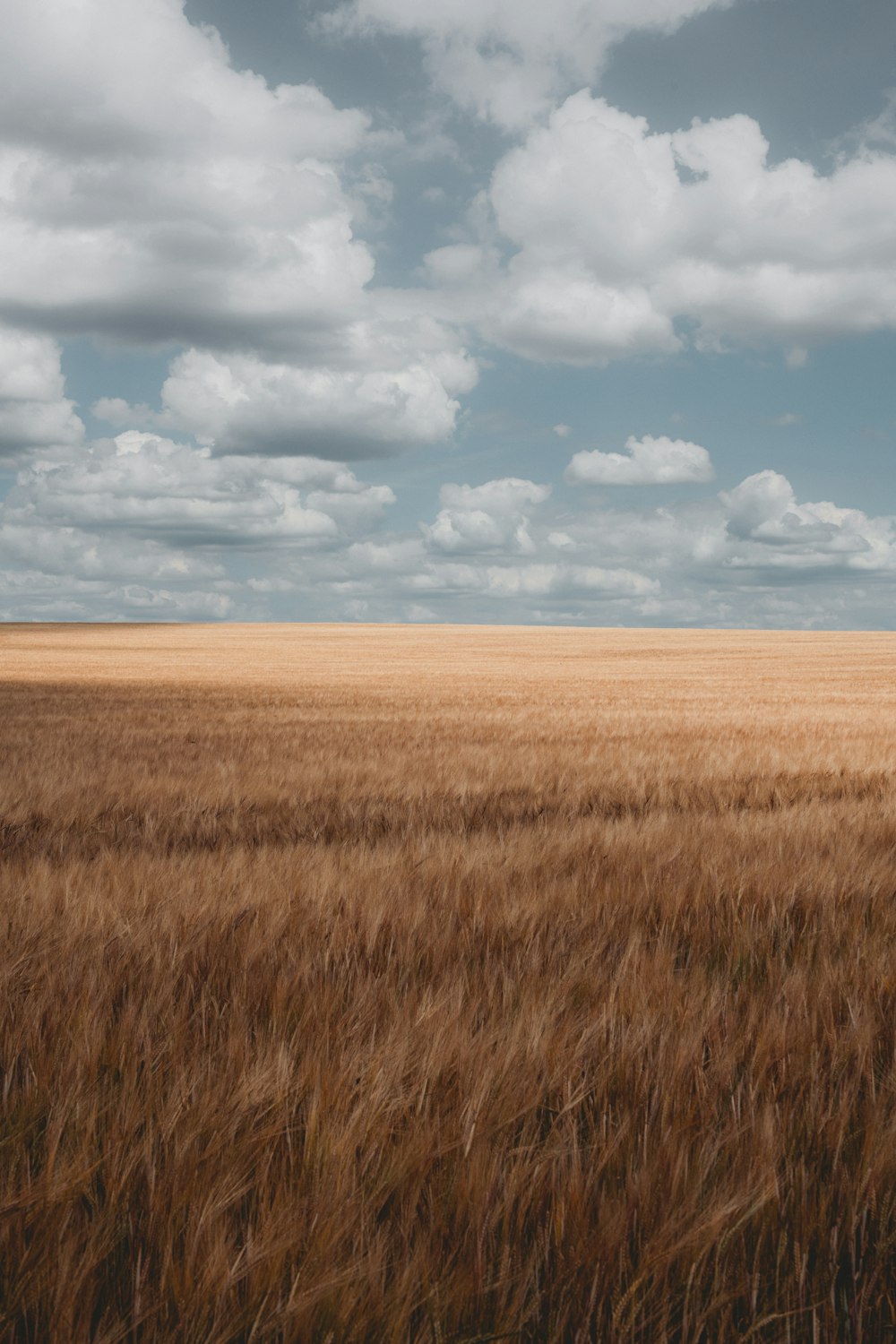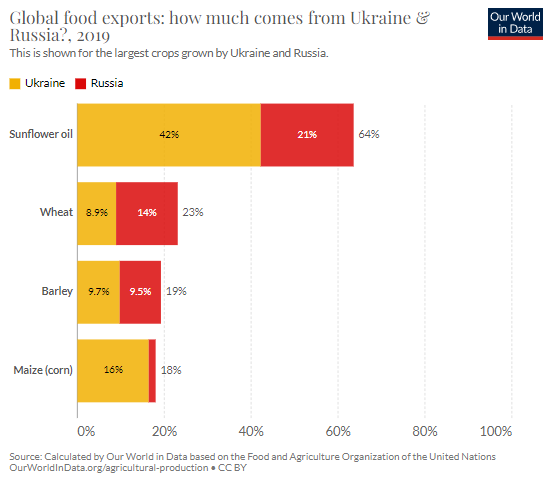Off The Shelf #27: Granular Detail
Shining a light of one aspect of the Ukraine war which rarely makes the front page
🌾 Grains are important, serving all kinds of purposes
🚢 Russia and Ukraine are key players in the global supply of grain
⚔️ The war has disrupted this, making some countries more vulnerable than others.
Maize, barley and wheat are types of grain, used for all sorts of bread and countless other staple foods. They’re also used in large quantities as animal feed, which in turn produce food. Grains are a key commodity, widely traded thanks to their ability to be easily stored and transported with limited spoilage.
In other words, grains are important.
Ukraine and Russia both play a key role in global food markets, and are major exporters of grain. Ukraine itself accounts for 16% of global maize exports, 10% of barley and 9% of wheat.
The invasion has obviously disrupted this. But it isn’t affecting every country equally. Taking a closer look at wheat: the map below shows the countries most reliant on Ukraine for its supply - the darker the colour, the more reliant the country is. Countries in the Middle East, Africa and parts of Asia top the list here. 44% of Libya’s wheat comes from Ukraine, and 42% of Uganda’s. Indonesia, Thailand, Mauritania, Tunisia and Israel are also vulnerable.
By comparison, here in the UK, we’re relatively lucky: 0.3% of our wheat comes from Ukraine.
This means that the war in Ukraine isn’t just a local humanitarian disaster, or a global geopolitical threat. It’s also having knock-on effects on the global food system. Back in June, the UN warned of an ‘unprecedented wave’ of global hunger, with the ripple effects of the war expected to drive the number of people suffering from severe food insecurity up to 323 million across the globe this year.
This is why the back and forth about whether Russia is allowing Ukraine to export its grain is so important.
THE GRAIN DEAL SO FAR
In February, Russia invaded Ukraine, blockading ports and threatening global grain supply chains.
In late July, the UN and Turkey brokered a deal establishing safe corridors for Ukraine’s ships through the black sea. Since then, Ukraine has been able to export more than 9 million tonnes of grain. This helped to ease global food prices and prevent millions from falling into poverty.
But at the end of October, Russia announced it was suspending the deal. It claimed it was responding to drone attacks by Ukraine on its warships in Sevastopol.
As rhetoric in the war has ramped up, global cereal prices have started to climb again, as shown by the yellow line in the chart below. This is using data from the UN FAO’s food price index. The second chart shows that, even if prices have dropped in the last few months, they’re still sky-high relative to longer-term history.
Since then, Putin has relented, and agreed to allow exports to resume, with Turkey again playing the part of mediator. One theory behind Russia’s climbdown is that it is trying to curry diplomatic favour with the countries in the Middle East and Africa which are most reliant on these imports.
Whatever happens next in the grain saga, it’s clear that the war is by no means over - and while that’s the case, there’s a continued threat to global supply chains and price volatility is likely to remain. With some countries more vulnerable than others, this is only likely to lead to more instability in the long run, and the global food system could increasingly play a part in future conflicts.
Which other aspects of the war in Ukraine aren’t getting enough attention? Let me know in the comments.
Data as of 6 November 2022. Just to keep my senior politician readership out of hot water on Sunday morning TV. Price of milk represented by the average price of comparable 2-pint bottles at 5 major retailers in the United Kingdom (Tesco, Aldi, Sainsbury’s Waitrose and Marks & Spencer). Index is equally weighted and based on online prices. Methodology is purely proprietary and utterly unscientific. For actual price data that might be remotely useful for economic analysis, try the Office for National Statistics.
HOW CAN WE STAY IN TOUCH?
📸 I’m on Instagram where I chronicle my cooking @slothychef
👤 Same deal for Facebook Slothy Chef
📧 Drop me a note by replying to this email.









Good article, thanks for making it so clear and simple so that people would learn more about my country's impact on the food supply chains. In peaceful times Ukraine has a lot to offer to the world.